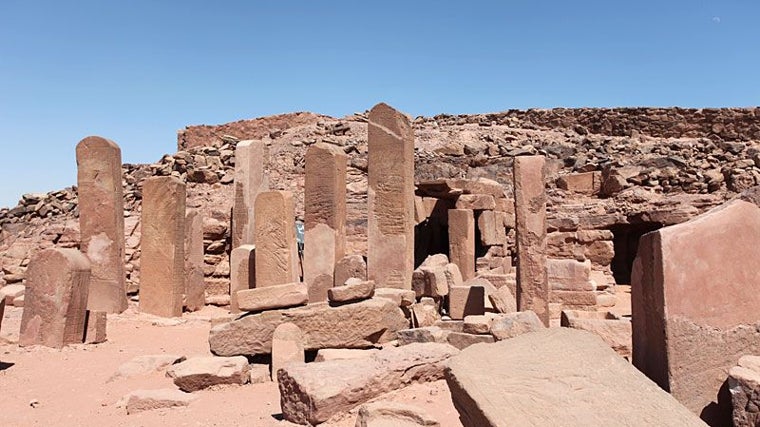Was Moses a historical figure? A new interpretation of two 3,800-year-old inscriptions reopens the debate.

Michael S. Bar-Ron , a graduate student at Ariel University (West Bank), believes he has discovered the oldest extra-biblical inscribed references to Moses , the protagonist of the Old Testament Exodus, who freed the Jewish people from slavery in Egypt, but whose historical existence has not been verified by archaeology until now.
For eight years, Bar-Ron has been studying 3,800-year-old inscriptions from a turquoise mine in Egypt using high-resolution images and 3D scans, and says two of them read "zot mi'Moshe" (Hebrew for ' this is from Moses' ) and "ne'um Moshe" (' a saying of Moses ').
The inscriptions were first discovered by the renowned British archaeologist William Petrie in the early 20th century on the rock walls of the Sarabit el-Khadim site in the Sinai Peninsula, along with more than 20 other Proto-Sinaitic carvings. They are believed to have been made by Semitic-speaking workers during the reign of Amenemhat III (c. 1800 BC), a Middle Kingdom pharaoh who has previously been linked by scholars to biblical passages.
Because of the personal tone and poetic form of the inscriptions, Bar-Ron suggests in his protothesis that they are the work of a single scribe, who was familiar with Egyptian hieroglyphics and used Proto-Sinaitic script for his religious and personal reflections.
 Sarabit el-Khadim, in the Sinai Peninsula
WIKIPEDIA
Sarabit el-Khadim, in the Sinai Peninsula
WIKIPEDIA
Some nearby inscriptions mention "El," the ancient Hebrew name for God, while others invoke Baalat, a female deity and the Semitic counterpart of the Egyptian goddess Hathor. Several inscriptions to Baalat appear to have been scratched, according to Bar-Ron, by worshippers of "El," and there are also comments about the "slavery" of Semitic miners and their "foremen."
These and other indications of an anti-Baalat movement that led to a violent purge and what this expert interprets as a call to leave the area ("ni'mosh," "let us depart"), fuel, in his view, the idea of a religious rebellion and a mass exodus, similar to that of the Exodus. Bar-Ron even links the biblical Joseph to the vizier Ankhu, a member of the Semitic elite during the time of Pharaoh Amenemhat III.
The researcher acknowledges that his study, which has not been peer-reviewed, is still an early thesis, although he has received academic advice from archaeologist Pieter van der Veen . His reading of the inscriptions has not convinced some of the scientific community.
German Egyptologist Thomas Schneider of the University of British Columbia has called their claims "completely unfounded and misleading ," according to The Daily Mail , and warned that "arbitrary letter identifications can distort ancient history." Experts stress that Proto-Sinaitic writing is very difficult to decipher and warn that subjective interpretations can lead to erroneous conclusions.
ABC.es




%3Aformat(jpg)%3Aquality(99)%3Awatermark(f.elconfidencial.com%2Ffile%2Fbae%2Feea%2Ffde%2Fbaeeeafde1b3229287b0c008f7602058.png%2C0%2C275%2C1)%2Ff.elconfidencial.com%2Foriginal%2Fbd2%2Fe90%2F7a5%2Fbd2e907a569ebeebd9fc42bee4511ddc.jpg&w=1280&q=100)